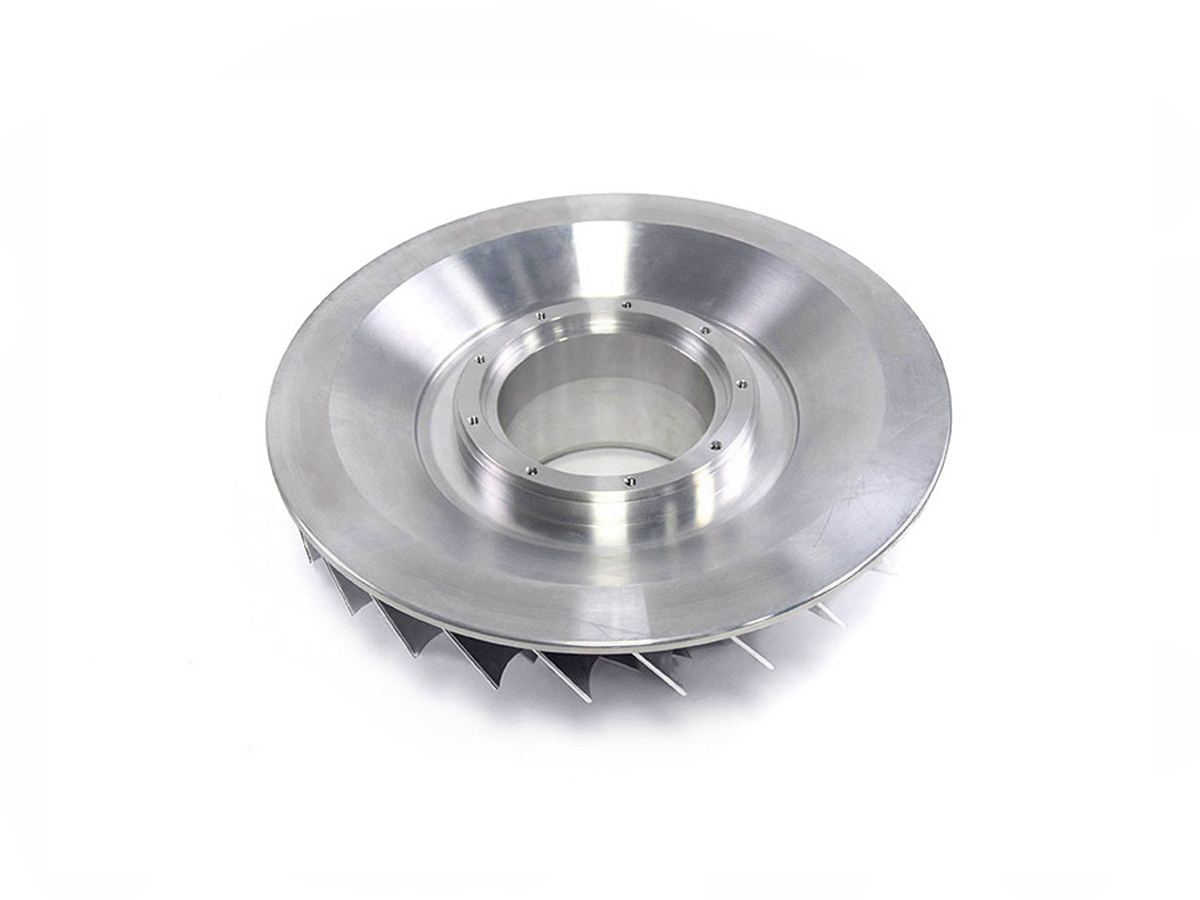High-Quality Aluminum CNC Machining for Power Plant Equipment
Introduction to High-Quality Aluminum CNC Machining for Power Plant Equipment
Power plants require lightweight equipment capable of withstanding high temperatures, pressure, and harsh conditions. Aluminum CNC machining is an ideal solution for producing components that meet these stringent requirements. Aluminum alloys, such as 6061, 7075, and 2024, are commonly used in power plants due to their excellent strength-to-weight ratio, corrosion resistance, and thermal conductivity.
CNC machining of aluminum enables the production of high-precision, custom components like heat exchangers, turbine parts, structural supports, and cooling systems. These components ensure efficient energy transfer, structural integrity, and reliable operation, helping to improve the overall performance and lifespan of power plant systems.
Material Performance Comparison for Aluminum Parts in Power Plant Equipment
Material | Tensile Strength (MPa) | Thermal Conductivity (W/m·K) | Machinability | Corrosion Resistance | Typical Applications | Advantages |
|---|---|---|---|---|---|---|
310 | 167 | Excellent | Excellent (>800 hrs ASTM B117) | Structural supports, heat exchangers | Lightweight, good weldability, good thermal conductivity | |
570 | 130 | Good | Good (>500 hrs ASTM B117) | Turbine components, critical load-bearing parts | High strength, excellent fatigue resistance | |
470 | 121 | Excellent | Good (>500 hrs ASTM B117) | Aerospace components, cooling systems | High strength, excellent fatigue resistance | |
350 | 120 | Good | Excellent (>1000 hrs ASTM B117) | Heat exchangers, marine environments | Excellent corrosion resistance, good weldability |
Material Selection Strategy for Aluminum Parts in Power Plant Equipment
6061 Aluminum provides a tensile strength of 310 MPa and excellent machinability, making it ideal for parts that require high strength and good thermal conductivity, such as structural supports and heat exchangers. Its excellent corrosion resistance (greater than 800 hours in ASTM B117) ensures durability even in challenging power plant environments.
7075 Aluminum, known for its high strength (570 MPa), is perfect for turbine components and critical load-bearing parts. Its excellent fatigue resistance makes it a top choice for parts that experience constant mechanical stress and high temperatures in power plants.
2024 Aluminum offers a tensile strength of 470 MPa and is often used in aerospace and cooling system applications. Its ability to withstand high-stress conditions while maintaining its structural integrity makes it ideal for use in power plants that demand strength and reliability over long periods.
5083 Aluminum is known for its superior corrosion resistance (greater than 1000 hours in ASTM B117). It is suitable for parts exposed to harsh environmental conditions, such as heat exchangers and components used in marine environments. It offers good weldability and high strength, making it ideal for power plant applications with critical strength and corrosion resistance.
CNC Machining Processes for Aluminum Parts in Power Plant Equipment
CNC Machining Process | Dimensional Accuracy (mm) | Surface Roughness (Ra μm) | Typical Applications | Key Advantages |
|---|---|---|---|---|
±0.005 | 0.2-0.8 | Structural supports, heat exchangers | High precision, complex geometries | |
±0.005-0.01 | 0.4-1.2 | Turbine components, valves | Excellent rotational accuracy | |
±0.01-0.02 | 0.8-1.6 | Mounting holes, ports | Accurate hole placement | |
±0.002-0.005 | 0.1-0.4 | Surface-sensitive components | Superior surface smoothness |
CNC Process Selection Strategy for Aluminum Parts
Precision CNC Milling is ideal for manufacturing high-precision aluminum components like structural supports and heat exchangers. With tight tolerances (±0.005 mm) and fine surface finishes (Ra ≤0.8 µm), this process ensures that parts meet the required specifications for demanding power plant applications.
CNC Turning is used for cylindrical aluminum parts such as turbine components and valves. It ensures exceptional rotational accuracy (±0.005 mm) and produces smooth, uniform parts that are essential for maintaining the integrity and efficiency of power generation systems.
CNC Drilling guarantees precise hole placement (±0.01 mm), making it ideal for creating mounting holes and ports required for component assembly in power plants. This process ensures that parts fit securely, reducing the risk of misalignment or failure during operation.
CNC Grinding achieves exceptional surface finishes (Ra ≤ 0.4 µm) for aluminum parts that require a smooth, high-quality surface, which is crucial for sealing components and bearing surfaces used in power plant equipment.
Surface Treatment for Aluminum Parts in Power Plant Equipment
Treatment Method | Surface Roughness (Ra μm) | Corrosion Resistance | Hardness (HV) | Applications |
|---|---|---|---|---|
0.4-1.0 | Excellent (>1000 hrs ASTM B117) | 400-600 | Aluminum heat exchangers, structural supports | |
0.2-0.6 | Excellent (>800 hrs ASTM B117) | 1000-1200 | Aluminum components exposed to harsh conditions | |
0.1-0.4 | Superior (>1000 hrs ASTM B117) | N/A | Turbine components, high-performance surfaces | |
0.2-0.8 | Excellent (>1000 hrs ASTM B117) | N/A | Heat exchangers, sealing components |
Typical Prototyping Methods
CNC Machining Prototyping: High-precision prototypes (±0.005 mm) for functional testing of aluminum components used in power plant systems.
Rapid Molding Prototyping: Fast and accurate prototyping for aluminum parts like heat exchangers, structural components, and cooling systems.
3D Printing Prototyping: Quick turnaround prototyping (±0.1 mm accuracy) for initial design validation of aluminum components.
Quality Inspection Procedures
CMM Inspection (ISO 10360-2): Dimensional verification of aluminum parts with tight tolerances.
Surface Roughness Test (ISO 4287): Ensures surface quality for precision components in power generation systems.
Salt Spray Test (ASTM B117): Verifies corrosion resistance performance of aluminum parts in harsh environments.
Visual Inspection (ISO 2859-1, AQL 1.0): Confirms aesthetic and functional quality of aluminum components.
ISO 9001:2015 Documentation: Ensures traceability, consistency, and compliance with industry standards.
Industry Applications
Power Generation: Aluminum heat exchangers, structural supports, turbine components.
Aerospace: Engine components, brackets, high-performance parts.
Automotive: Engine components, cooling systems, structural parts.
FAQs:
Why is aluminum used in power plant equipment?
How does CNC machining improve the precision of aluminum parts?
Which aluminum alloys are most suitable for power generation systems?
What surface treatments enhance the durability of aluminum parts in power plants?
What prototyping methods are best for aluminum components used in power generation?

